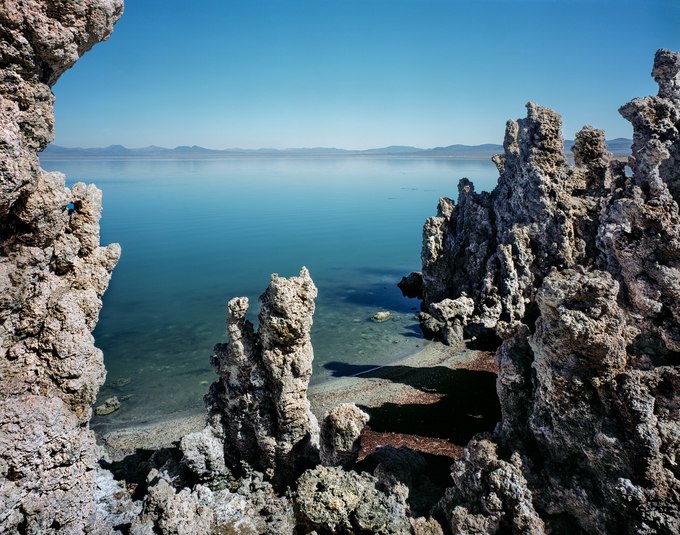A promontory on the south shore of eastern California's Mono Lake hosts a collection of tufa towers once formed beneath its surface. A few hundred years ago, when the lake was deeper, underground mineral springs bubbled up from its bed, chemically interacting with the saline water to build the limestone tufa formation in this photograph.
One of North America's oldest extant lakes, Mono Lake, was created three-quarters of a million years ago by nearby volcanic eruptions that sealed off mountain streams previously flowing to the Pacific Ocean. The spring runoff from the snow-covered Sierra Nevada Range annually replenished the lake. Beginning in the 1940s, the lake was in danger of becoming an arid playa due to excessive water diversions by the Los Angeles Department of Water & Power until conservation efforts stabilized the lake’s level.
Each time I’ve visited this surreal landscape, it has been a soothing, almost mystical experience. When Mark Twain camped here in the 1860s, he described the lake as a 'lifeless, treeless, hideous desert.' Despite Twain's impression, the lake is a thriving ecosystem in its waters, shore, and air. Beneath its surface, trillions of brine shrimp flourish annually. These tiny creatures and the alkali flies that line the lake's hundred-mile shore have provided abundant food to thousands of nesting gulls, sparrows, osprey, and millions of migrating birds.
Location research and commentary by James Baker.

